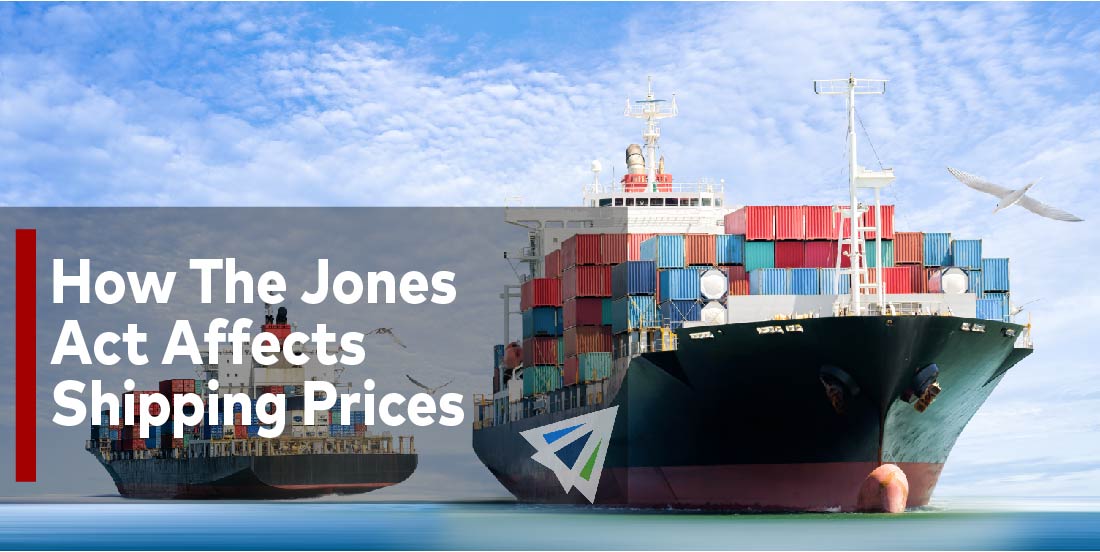Shipping laws and regulations can get surprisingly complicated pretty fast. In a previous post, we talked a bit about the Merchant Marine Act of 1920, which was an act passed regarding various ocean shipping regulations, one of which was the Jones Act.
The Jones Act has been active since its enactment in 1920 and continues to have major impacts on shippers. It is responsible for a few laws surrounding ocean shipping within the United States. Here is a little bit more about the act:
The Jones Act: How It Affects Shipping Prices
The Jones Act specifically details out regulations regarding what ships can be used when shipping via ocean between two different U.S. ports. The law states that only U.S. built, owned, and operated (i.e. U.S. citizen operated) ships can move cargo via ocean between two U.S. ocean ports. That may not seem like it has many implications, but the Jones Act has long-standing affects on shipping prices for subsets of U.S. shippers. These are a few ways that the Jones Act affects shipping prices:
Low Supply of U.S. Ships
Obviously, there are a ton of internationally owned and operated steamship lines. These are responsible for millions of containers that move across international waters on an annual basis. Unfortunately, since the Jones Act requires U.S. built, owned, and operated ships, a cargo move between two U.S. ports cannot use any internationally owned or built steamship lines.
Since only U.S. ships can be used, the price of shipping is higher. This is partially die to the low supply and high demand, but also due to a lack of competition, which leads to the next point…
Less Competition and a Less Congested Market
The Jones Act not only limits the amount of steamship lines that can ship between U.S. ports – it drastically decreases the competition in the market since there are fewer competing companies for the shipments.
This means that U.S. steamship lines can jack their prices up for U.S.-to-U.S. port moves with little pushback from the market. Since significantly fewer options, cheaper shipping prices are often not available, allowing shipping companies to continue raising prices.
Increased Prices for Certain U.S. Importers
The price increases apply specifically to U.S. shippers (importers) who are receiving cargo from another U.S. port. With the exception of a few outliers, this primarily applies to U.S. territories off the coast of U.S. mainland. This includes Puerto Rico, Alaska, Hawaii, Florida Keys, and all other off-land U.S. territories.
Conclusion
The Jones Act has had long-standing implications on shipping prices for U.S. based importers who reside in off-land U.S. territories. The Jones Act requires U.S. made, owned, and operated vessels to be used for transportation of goods between two U.S. ports. This means for all shipments going from the U.S. to Hawaii, Alaska, Puerto Rico, or other similar off-land U.S. territories, shipping prices can get ridiculously high. The low supply of U.S. steamship lines in comparison to the international supply means that competition is low and shipping companies can jack up their prices for U.S. to U.S. port moves. These costs naturally get relayed to the importer, putting off-land U.S. residents in a tough position to reconcile costs of shipping.
As we detailed in a previous post, there are cases where the Jones Act has been bypassed in the instance of extreme weather such as tsunamis or hurricanes.
Our team at Interlog USA has decades of experience in the industry and would be happy to help!
